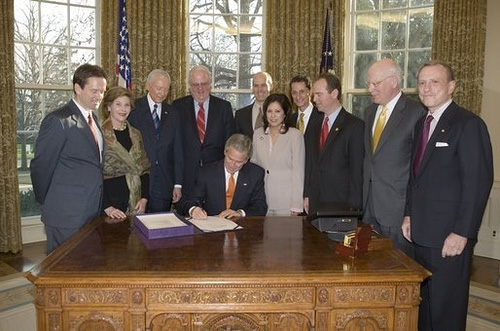|
Violence Against Women Act
10 YEARS OF PROGRESS AND MOVING FORWARD The Violence Against Women Act (VAWA) is a landmark piece of legislation that sought to improve criminal justice and community-based responses to domestic violence, dating violence, sexual assault and stalking in the United States. The passage of the Violence Against Women Act in 1994 and its reauthorization in 2000 has changed the landscape for victims who once suffered in silence. Victims of domestic violence, dating violence, sexual assault and stalking have been able to access services, and a new generation of families and justice system professionals has come to understand that domestic violence, dating violence, sexual assault and stalking are crimes that our society will not tolerate. Reauthorization and expansion of this vital legal reform should be a Congressional priority in 2005. A HISTORY OF PROGRESS •Creating new system responses - Violence Against Women Act programs, funding and law reforms have changed federal, tribal, state and local responses to domestic violence, dating violence, sexual assault and stalking by: •Securing buy-in from formerly unengaged systems, like law enforcement, courts, and social services •Creating a federal leadership role that has encouraged tribes, states and local government to improve responses to victims and perpetrators •Establishing new federal crimes of domestic violence, sexual assault and stalking to fill in jurisdictional gaps in prosecuting these crimes •Defining the crimes of domestic violence, dating violence, sexual assault and stalking, as well as identifying promising practices to respond to these crimes •Focusing on the needs of underserved communities, such as immigrant and Native women Violence Agaginst Women Act 1994 - Congress, in passing VAWA 1994, envisioned a nation with an engaged criminal justice system and coordinated community responses. VAWA 1994 fostered: •Community-coordinated responses that brought together, for the first time, the criminal justice system, the social services system, and private nonprofit organizations responding to domestic violence and sexual assault •Recognition and support for the efforts of domestic violence shelters, rape crisis centers, and other community organizations nationwide working everyday to end this violence •Federal prosecution of interstate domestic violence and sexual assault crimes •Federal guarantees of interstate enforcement of protection orders •Protections for battered immigrants •A new focus on underserved populations and Native victims of domestic violence and sexual assault VAWA 2000 - Congress improved on the foundation established in VAWA 1994, including: •Identifying the additional related crimes of dating violence and stalking •The creation of a much-needed legal assistance program for victims of domestic violence and sexual assault •Promoting supervised visitation programs for families experiencing violence •Further protecting immigrants experiencing domestic violence, dating violence, sexual assault or stalking, by establishing U- and T-visas and by focusing on trafficking of persons CREATING POSITIVE CHANGE The Violence Against Womens Act’s effectiveness is evident in the progress that has been made since implementation. We know that local, state, and national laws are changing; programs, businesses, and communities are responding to victims’ needs; and studies show that rates of violence and reporting of crime are changing. Consider these highlights from 10 years of VAWA:
•States have passed more than 660 laws to combat domestic violence, dating violence, sexual assault and stalking. All states have passed laws making stalking a crime and changed laws that treated date or spousal rape as a lesser crime than stranger rape. •Since 1996, the National Domestic Violence Hotline has answered over 1.8 million calls. The Hotline answers over 19,500 calls a month and provides access to translators in 170 languages. •Businesses also have joined the national fight against violence. Hundreds of companies, led by the model programs established by Altria, Polaroid, Liz Claiborne, The Body Shop, Aetna and DuPont, have created Employee Assistance Programs that help victims of domestic violence. •More victims are reporting violence: among victims of violence by an intimate partner, the percentage of women who reported the crime was greater in 1998 (59%) than in 1993 (48%). Source: http://www.endabuse.org/vawa/display.php?DocID=34001 Violence Against Women Act 2011
|
